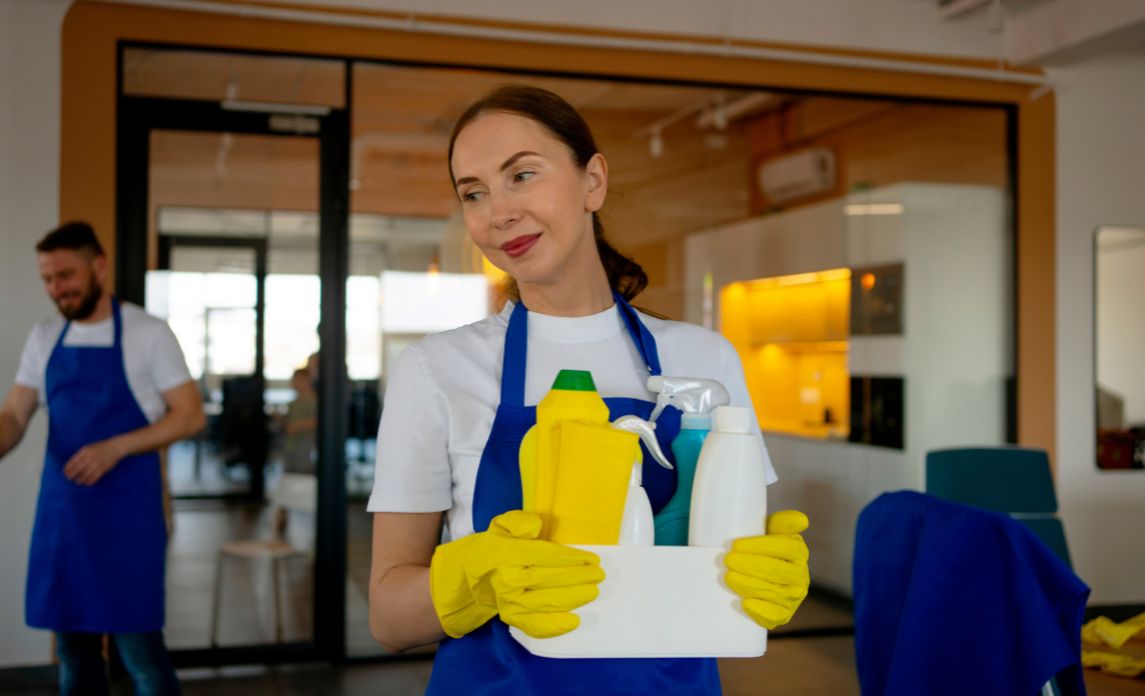Cleanliness and hygiene have always been essential aspects of daily life, but recent global events and ongoing advancements have propelled a significant evolution in cleaning practices. As we venture into a new year, the landscape of the cleaning industry continues to undergo transformation that is driven by a multitude of factors.
From technological innovations to heightened health concerns and a growing emphasis on sustainability, here are the trends that are shaping the way individuals and industries approach cleanliness this 2024:
Advanced Cleaning Technologies
The integration of sophisticated cleaning technologies continues to revolutionise the cleaning industry. Robotics, AI-powered systems, and smart sensors play an increasingly pivotal role in enhancing efficiency and precision in cleaning processes. These advancements not only streamline tasks, but also ensure thoroughness in maintaining cleanliness.
Sustainable Practices
The pursuit of eco-friendly and sustainable cleaning solutions has been a key trend in previous years and will remain so for 2024 and beyond. Both consumers and businesses are showing a heightened interest in reducing their environmental footprint, which is why they are opting more and more for biodegradable products and sustainable practices.
Health-Centric Approach
Since the COVID-19 pandemic, there has been increasing focus on health and hygiene across industries. Today, such concerns drive a continued emphasis on stringent cleaning protocols—which is also why Crewcare has developed a deep cleaning service that provides high-level sanitation for establishments that need it.
Beyond specialised services, disinfection practices, antimicrobial surfaces, and long-lasting disinfectants are also becoming more prevalent, especially in customer-facing businesses.
Personalised Cleaning Services
Different people and businesses have different cleaning requirements. As such, cleaning companies like Crewcare have been increasingly focussed on offering cleaning solutions that are tailor-fit for specific needs.
For this, data-driven insights are an important component so that service providers can offer personalised cleaning schedules and methods.
Touchless Technology
Technology influences practically all factors of day-to-day life in today’s world, and that includes cleaning. One such technology is touchless solutions, which have made their way into automated cleaning equipment and hands-free devices. These innovations reduce contact points, enhancing hygiene in public spaces and high-traffic areas.
Things That Influence Cleaning Trends
There are several factors that influence cleaning trends, which shape the way people approach cleanliness and sanitation, as well as the products or methods they use. Some of the key influencers of cleaning trends include the following:
- Health Concerns. Public health crises, pandemics (like the aforementioned COVID), and increased awareness of infectious diseases can significantly impact cleaning trends. Heightened concerns about disease transmission usually lead to more stringent cleaning protocols and the adoption of new disinfection practices.
- Technological Advancements. Innovations in cleaning technology, such as robotics and smart devices, can drive changes in cleaning practices. New technologies often offer more efficient, effective, and convenient ways to clean.
- Environmental Awareness. Growing concerns about sustainability and the environment have a huge impact on cleaning trends. There's a rising demand for eco-friendly cleaning products and practices that minimise the use of harsh chemicals and reduce the carbon footprint.
- Regulations and Standards. Government regulations, industry standards, and guidelines set by health organisations can drive changes in cleaning practices. In particular, compliance with standards often shapes the adoption of certain cleaning methods or products.
- Consumer Preferences and Behaviour. Over time, consumers change their preferences, lifestyles, and habits, which then impact cleaning trends. For instance, an increased focus on convenience, multipurpose products, or a preference for natural and DIY cleaning solutions are currently dictating changes in the market.
- Global Events and Trends. Factors such as socio-economic events, cultural shifts, and global trends also influence cleaning habits, which in turn influence cleaning industry trends. A good example of this is the shift to work-from-home culture due to the pandemic, which changed cleaning routines in residential spaces.
- Media and Influencers. Media coverage, including social media, influencers, and marketing campaigns, can dictate cleaning trends by promoting certain products, methods, or approaches to cleaning.
- Healthcare and Scientific Research. Advances in healthcare and scientific research, especially in microbiology and infection control, continuously shape cleaning practices. New findings about pathogens and effective cleaning methods have lasting impacts on industry standards.
- Demographic Changes. While they may not have as big an impact as other factors mentioned in this list, changes in demographics also exert some influence in cleaning trends. For instance, older adults may have different cleaning needs compared to younger, more mobile populations.
- Economic Factors. Lastly, economic conditions, including disposable income, affordability of cleaning products, and availability of cleaning services, can impact consumer choices in cleaning practices and product preferences.
These factors often interact and evolve, contributing to the dynamic nature of cleaning trends over time. As these influences change, new trends emerge to address evolving needs, preferences, and challenges in maintaining cleanliness and hygiene across various settings.
As we progress into 2024, the landscape of cleaning trends will continue to evolve, redefining cleanliness standards across residential, commercial, and public spaces. Adapting to these trends will not only elevate hygiene standards but also contribute to a healthier, more environmentally conscious future.


